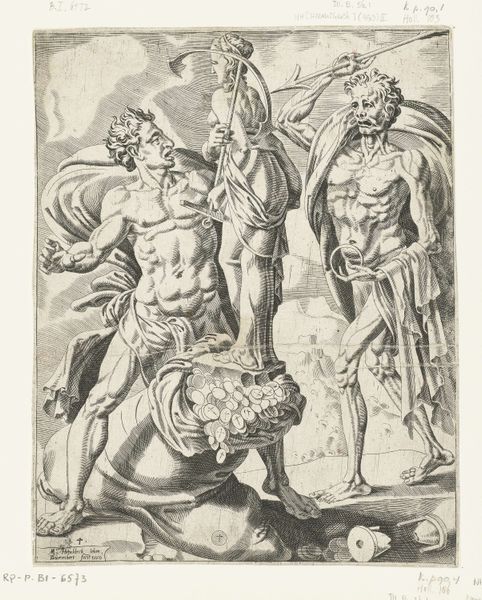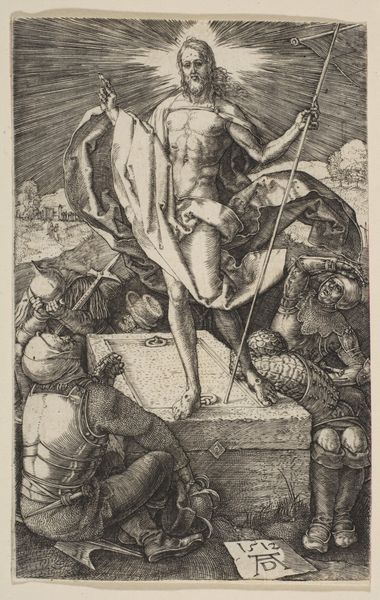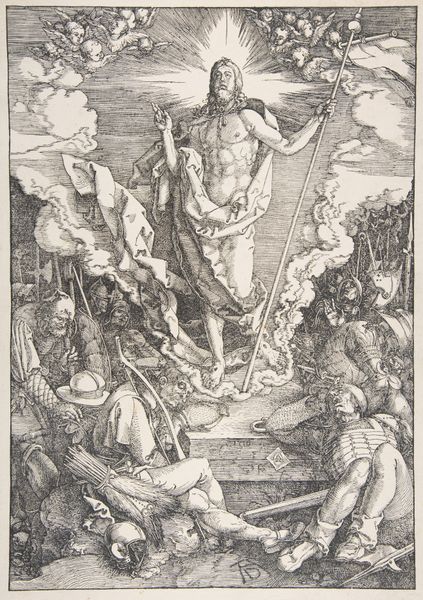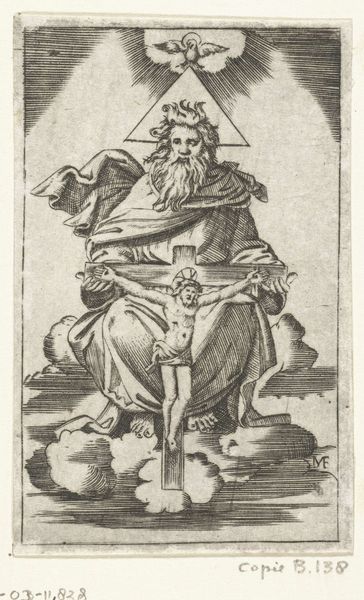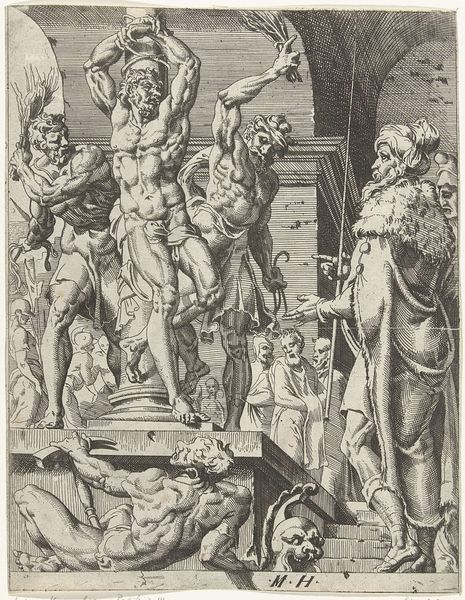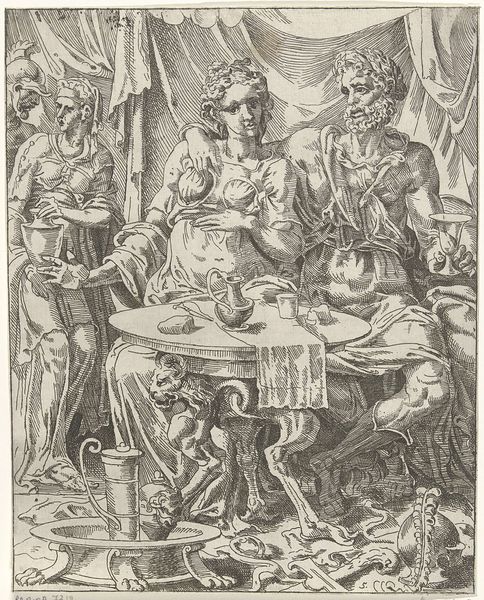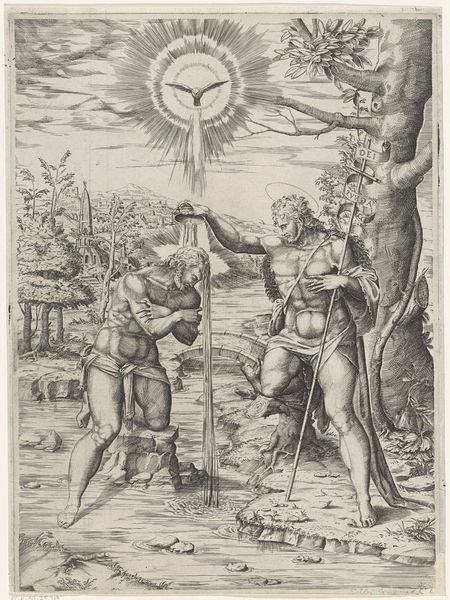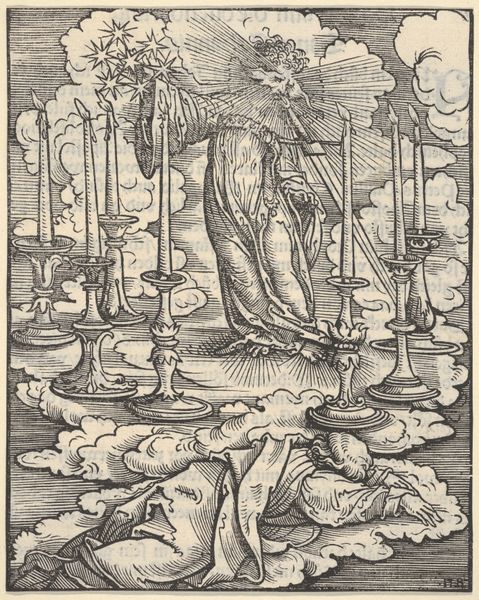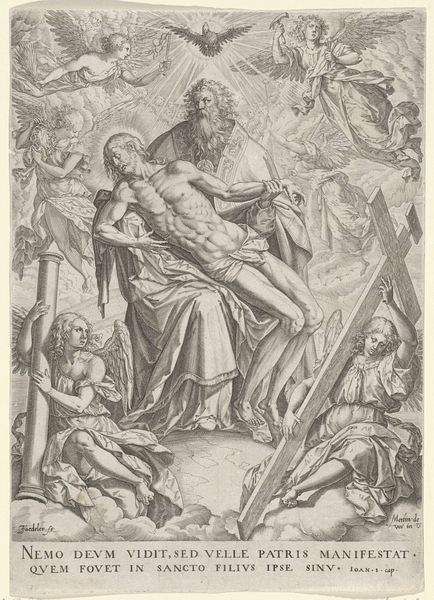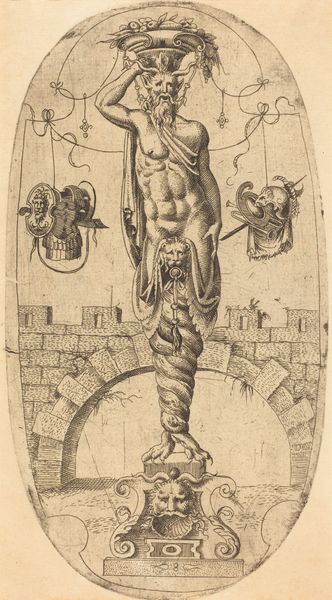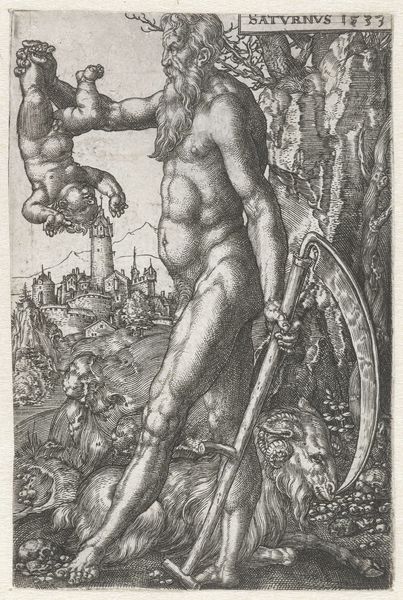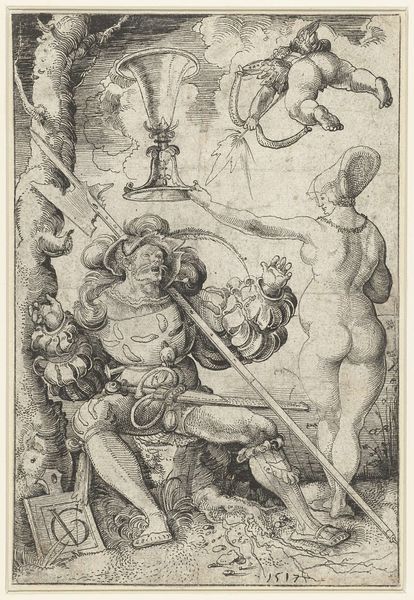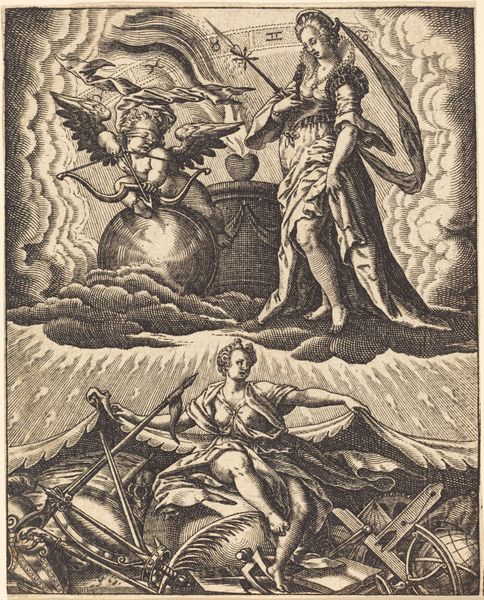
Geloof zuivert de harten van de mens met het bloed van Christus 1557 - 1561
0:00
0:00
print, engraving
# print
#
old engraving style
#
figuration
#
history-painting
#
northern-renaissance
#
engraving
Dimensions: width 258 mm, height 366 mm
Copyright: Rijks Museum: Open Domain
This engraving, made by Dirck Volckertsz Coornhert, is a testament to the power of the line. Coornhert, active in the 16th century, was a master of the burin, a tool that allowed for incredibly precise marks on a copper plate. Notice the complex imagery, all rendered through linear hatching. Christ’s blood flows into a basin, stirred by a figure who represents faith, and in which human faces are visible. This wasn't just a reproductive technique, it was a medium unto itself. Engraving was laborious, requiring immense skill and patience, but it was also a commercial art. Prints like these were made in multiples, a vital part of the communications network of the period, distributing ideas widely. This print highlights the contrast between the immense labor involved, and its ultimate purpose. By focusing on process, on the material, and its social context, we can appreciate the complex layers of meaning embedded in this image. It reminds us that art is never just about what is represented, but how it is made and circulated in the world.
Comments
No comments
Be the first to comment and join the conversation on the ultimate creative platform.
